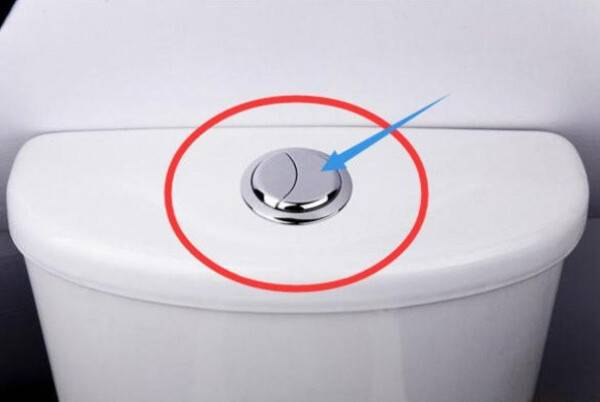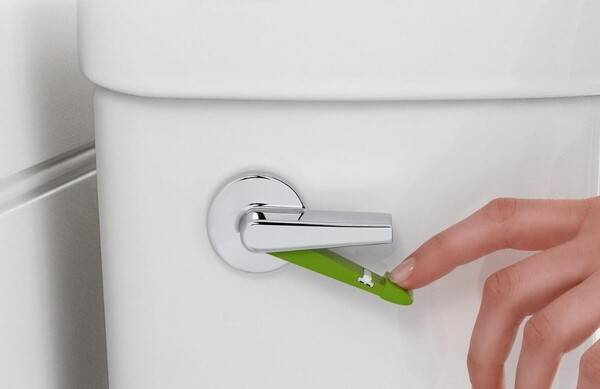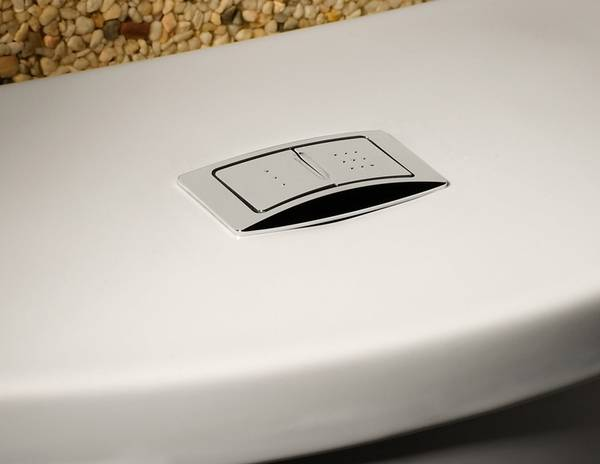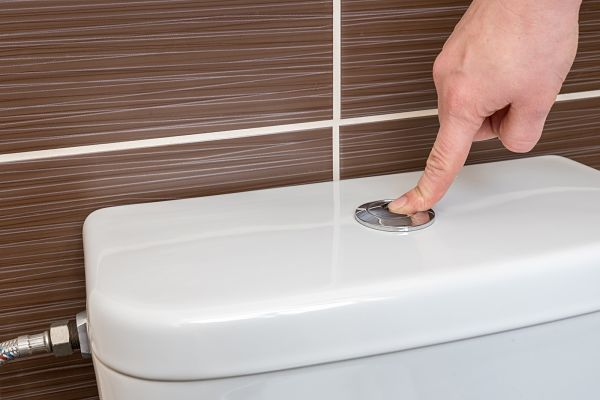If you’ve noticed modern toilets often have two buttons instead of one, you’re not alone. This design isn’t just about aesthetics; it’s part of a water-saving feature known as a dual-flush system. By understanding how each button works, you can reduce your water usage, cut down on utility costs, and even help the environment. Let’s break down how these two-button toilets function and how you can use them to maximize efficiency in your bathroom.
What Is a Dual-Flush Toilet?

A dual-flush toilet, often called a 2-button toilet, is equipped with two distinct flush options—each designed for different types of waste. These buttons are typically located on the top of the toilet tank, and they control the amount of water released with each flush. This system allows you to use the right amount of water based on your needs, conserving resources without sacrificing cleanliness.
Understanding the Small Button: Ideal for Liquid Waste
The smaller button on a dual-flush toilet is meant specifically for flushing liquid waste. By using less water for lighter loads, you’re not only saving water but also helping reduce your utility bills.
- Water Usage: The small button generally releases between 3 and 4 liters of water, though this can vary by model. Compared to a standard full flush, it uses significantly less water.
- Identifying the Small Button: This button is usually smaller in size, and some models mark it with a single water droplet icon. It may also differ in color to make it easier to distinguish.
- When to Use It: Use the small button when flushing only liquid waste. By opting for this button whenever possible, you’ll conserve water and help keep your bills low.
Understanding the Large Button: Designed for Solid Waste
The larger button, as you might guess, is intended for flushing solid waste. It uses a more powerful flow to ensure all waste is cleared from the bowl effectively.
- Water Usage: The large button typically releases between 5.5 and 7 liters of water, providing the necessary force to handle solid waste.
- Identifying the Large Button: The large button is generally bigger or may feature a symbol representing a more forceful flush, such as multiple water droplets or waves.
- When to Use It: You’ll want to use the large button when flushing solid waste. It’s designed to provide a robust enough flow to ensure the bowl is completely cleaned, leaving it fresh for the next use.
Lever-Based Toilets: Two Flushing Options Without Buttons
Not all dual-flush toilets use buttons. Some older or differently designed toilets may have a lever instead. Here’s how to operate these to get the same water-saving benefits:
- Half-Pull for Liquid Waste: A light, halfway pull on the lever releases a smaller amount of water, similar to pressing the small button on a dual-flush toilet. This partial flush is ideal for liquid waste.
- Full Pull for Solid Waste: Pulling the lever fully releases a larger amount of water to handle solid waste. This ensures that everything is flushed away efficiently, keeping your toilet clean.
The Benefits of Using a Dual-Flush Toilet Correctly

Using a dual-flush toilet the right way has multiple benefits that impact your wallet, household, and the environment:
- Water Conservation: Dual-flush toilets can save thousands of liters of water each year by allowing you to use the smaller flush when a full one isn’t necessary.
- Lower Utility Bills: With reduced water usage comes a lower water bill. Over time, these savings can make a noticeable difference in your monthly expenses.
- Environmental Impact: Water conservation is crucial for reducing the strain on municipal water systems and minimizing your environmental footprint. Every drop saved helps in the larger effort to conserve our natural resources.
Tips for Maximizing Dual-Flush Toilet Efficiency

To make the most of your dual-flush toilet, keep these tips in mind:
- Use the Small Button for Liquid Waste: Whenever possible, opt for the smaller flush. It’s designed to be sufficient for liquid waste, helping you save water without compromising cleanliness.
- Press One Button at a Time: Some models may release the larger flush by default if you press both buttons simultaneously. Stick to pressing one button at a time to ensure you’re getting the desired flush.
- Familiarize Yourself with the Symbols: Each toilet brand may have slightly different symbols or designs for the buttons. Take a moment to identify which button is for the smaller flush and which is for the full flush to avoid confusion.
- Check for Adjustable Water Levels: Some newer dual-flush models allow you to adjust the amount of water used for each flush. If your toilet has this feature, setting it to the lowest efficient level can further enhance water conservation.
Debunking Common Myths About Dual-Flush Toilets
There are a few misconceptions about dual-flush systems that might make people hesitant to use them effectively. Let’s clear up some of the most common myths:
- “Pressing both buttons gives an extra-powerful flush.” In reality, pressing both buttons at once usually just activates the larger flush, not a combination of the two.
- “Dual-flush toilets don’t work as well as single-flush toilets.” When used correctly, dual-flush toilets are just as effective, if not more so. They’re specifically designed to use only as much water as needed.
- “Always use the large flush to ensure cleanliness.” Unless you’re dealing with solid waste, the small flush is generally more than enough to clear the bowl. Using it regularly saves water and keeps your utility bills in check.
The Dual-Flush Toilet and Your Role in Conservation

Dual-flush toilets are an excellent way to contribute to water conservation without making major lifestyle changes. By using the right flush option for your needs, you can reduce water usage, lower your monthly expenses, and lessen your impact on the environment.
Conclusion: Using the Right Button for Maximum Efficiency
Dual-flush toilets are more than a modern design trend—they’re a simple yet powerful tool for conserving water. By understanding the purpose of each button and knowing when to use them, you can take full advantage of this eco-friendly feature. Remember, the small button is for liquid waste, and the large button is for solid waste. With a little awareness and consistent usage, you’ll not only improve your water efficiency but also contribute to a more sustainable future, one flush at a time.